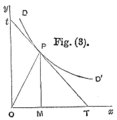Price elasticity of demand facts for kids
The price elasticity of demand (often called PED) is a way to measure how much people change what they buy when the price of something changes. Imagine a toy you really want. If its price goes up, will you still buy it? Or will you stop wanting it? PED helps us understand this.
It tells us how much the amount of a product people want changes when its price changes. If the price goes up a little, and people stop buying a lot of it, that product has a high PED. If the price goes up a lot, and people still buy almost the same amount, it has a low PED.
The formula for PED looks like this:
- The percentage change in the amount people want
- Divided by the percentage change in the price
Because people usually buy less of something when its price goes up (and more when it goes down), the PED number is usually negative. But economists often just look at the number itself, ignoring the minus sign.
If the PED number is bigger than 1 (like 2 or 3), it means people are very sensitive to price changes. We call this price elastic demand. This happens when a small price change leads to a big change in how much people buy.
If the PED number is smaller than 1 (like 0.5 or 0.2), it means people are not very sensitive to price changes. We call this price inelastic demand. This happens when a big price change leads to only a small change in how much people buy.
On a graph, the price elasticity of demand is shown by how steep the demand line is. A very steep line means the demand is more price inelastic. A flatter line means the demand is more price elastic.
Contents
What Makes Demand Elastic or Inelastic?
Several things can affect how much people change their buying habits when prices change.
Availability of Substitutes
When there are many other similar products you can buy instead, the demand for a specific product is usually more price elastic. If the price of one brand of soda goes up, you can easily switch to another brand. This makes the demand for that first brand elastic.
If there are not many substitutes, demand tends to be more price inelastic. For example, if there's only one company that makes a certain medicine you need, you might still buy it even if the price goes up a lot.
Closeness of Substitutes
If the substitute products are very similar to the original product, it's easier for people to switch. This makes demand more price elastic. For example, different brands of plain sugar taste almost the same. So, if one brand's price goes up, people will easily switch to a cheaper brand.
If substitutes are not very similar, people might be less likely to switch, making demand more inelastic.
Degree of Necessity
How much you need a product affects its demand elasticity.
- Needs (like basic food or water) tend to have price inelastic demand. Even if the price changes, you still need them, so you'll likely keep buying them.
- Wants (like luxury items or entertainment) tend to have price elastic demand. If the price of a concert ticket goes up a lot, you might decide not to go.
Some products, like cigarettes for someone with a strong habit, might be seen as a "need" by the person buying them. This can make their demand very price inelastic.
Proportion of Income
If a product costs a large part of your income, its demand tends to be more price elastic. A small percentage change in the price of a very expensive item (like a car) means a large change in the actual money you have to pay. This makes you more likely to look for cheaper options or delay buying.
For cheaper items (like a pack of gum), even a big percentage price change might not be a lot of money. So, you might not change your buying habits as much, making demand more price inelastic.
Time Period
Over time, the demand for products tends to become more price elastic. In the short run, you might not have many choices. But given more time, you can find alternatives.
For example, if gas prices suddenly go up, you might not immediately stop driving. But over a longer time, you might decide to buy a more fuel-efficient car, use public transport, or carpool. This makes your demand for gas more elastic in the long run.
Images for kids
See also
 In Spanish: Elasticidad precio de la demanda para niños
In Spanish: Elasticidad precio de la demanda para niños


